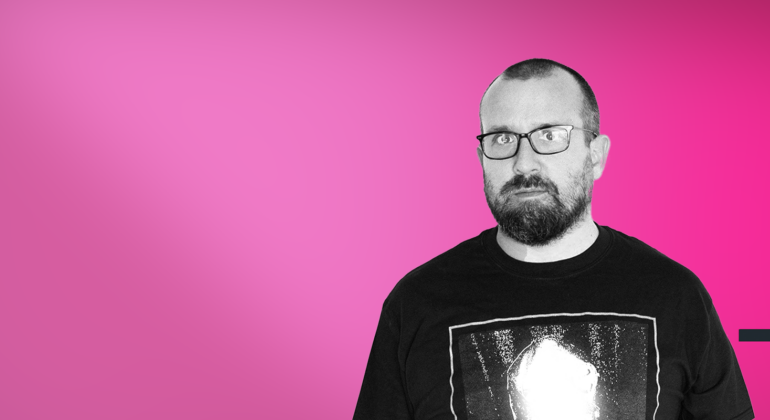I’m a comic book fan at heart. At one point, I even wanted to be a comic book artist; I drew a 10-page Spider-Man book when I was 13, made 50 copies and sold them all at school for a dime each.
Even though I didn’t follow that career path, I’m still captivated by the art, the imagination and the storytelling in comics—and how they support characters with team-ups, appearances and mentions. Part of that story includes heroes teaming up in the comic books to take down villains. It’s always fun to see how heroes interact with each other in these situations. Plus it helps expand readership by cross-promoting characters in comics where they’re not usually featured. The movies of the Marvel Cinematic Universe (MCU) are also using this storytelling technique from the comics, and it’s been vital to their enormous success.
I’m still passionate about storytelling, and I enjoy incorporating it into my chosen career path in digital marketing and strategy.
So, after watching the recent release of Avengers: Infinity War (don’t worry, there are no movie spoilers in this post), I realized there are valuable storytelling takeaways and production ideas woven into the entire epic Marvel Cinematic Universe. We can all learn from these films as content marketers: how they plan content, create internal links and provide lots of bonus material for die-hard fans and brand evangelists.
-
Planning an Epic Content Strategy
A ridiculous amount of planning has gone into MCU so far. Ever since the Iron Man was introduced to moviegoers in the premiere Marvel release, there were plans for heroes to come together in grander films.
The producer of all the MCU films, Kevin Feige, has been a mastermind in planning each Marvel movie, and we should all take notice as content creators and digital marketers. His planning makes our content calendars look wimpy by comparison, and shows what releasing regular, high-quality content can do for an organization. The films he’s produced have grossed more than $16 billion, so I’d say he’s doing something right!
Since 2008, there have been two to three Marvel movies released a year, and almost every release does better than the previous one.
Thanos has been teased in the MCU since the first Thor movie in 2011. For years, he’s made appearances and has been pulling strings and enacting storylines behind the scenes. Until now. And his appearance as a primary antagonist brings a larger story to life than ever before.
Take your content to heroic levels
How can you do this with your content strategy? Start by basing every decision on your brand vision and mission. Answer basic questions in blog posts, videos and podcasts. Then expand and build on those ideas to incorporate your brand message and mission, and intrigue your customers and fans with bigger ideas laid out in eBooks, new product releases, or an event to engage your customers in new ways.
Your content marketing strategy should build upon itself to create something epic surrounding your brand and your customers, regardless of the medium.
-
Create Internal Intrigue to Inspire Customers to Visit Your Universe of Content
Most every Marvel movie now has an appearance from a hero who is not starring in the main storyline. In Thor 3, Doctor Strange confronts and then assists Thor and Loki in New York City, Iron Man plays a pivotal role in Spider-Man: Homecoming, and Falcon was embarrassed in Ant-Man while breaking into Avengers HQ, leading to an interesting relationship between the two in Captain America: Civil War.
Why is this worth mentioning in the context of content? Because it’s fun for audiences to see their favorite characters in other movies, and it encourages people to go back and watch those characters in previous films.
For marketers, this concept can be embodied in the content you produce for your organization. Repurpose your content and share it in new and interesting ways. If it’s high quality and something you’re passionate about, your customers and followers will be happy to see an appearance of a previous theme. Plus, you’ll engage new followers with a world of content in a way you were unable to previously or they may simply have missed.
Mention previous blog posts in new blog posts, share screen shots of your popular Tweets on Instagram, and use audio from one of your podcast episodes in a YouTube video. Internal linking on your website and blog is also good for SEO, which is another way you can make yourself available to new customers. Once you get going, you’ll find the possibilities are endless.
-
Make Bonus Material for Your Brand Evangelists
Finally, it’s a good idea to provide something extra for your brand evangelists. The die-hard fans love to know what’s coming and how they can further be part of your brand.
You see this in MCU at the end of every movie, with the scene following the credits offering moviegoers a sneak peek into what’s next. Just think: Most people used to leave a movie theater as soon as the credits started rolling. Now Marvel has inspired viewers to stay through the credits just to see what might be coming next from Marvel.
There are also several Easter eggs in the movies for fans of the comic book series to hint at what may be coming in future movies. Stan Lee cameos are the perfect example. We all look for the master creator in every single Marvel movie and love every appearance.
How can you offer your die-hard fans extra content? Maybe in an email newsletter, you offer first dibs at event tickets or a new product release. At the end of a video, you might drop a different piece of content like a unique song or question of the day to increase engagement and build expectation toward a regular segment in future content.
Set Yourself Apart
Whether or not you like the Marvel movies, you can’t deny they’ve made an enormous impact on society and culture. Their formula has worked to set them apart from all other movies. People act differently at an MCU film.
Learn from the masters. Set yourself apart. Build an epic content strategy and a Hulk of a brand!


